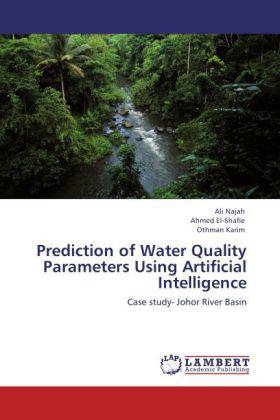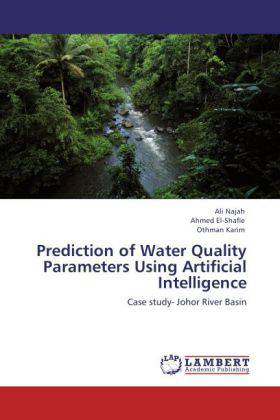
Je cadeautjes zeker op tijd in huis hebben voor de feestdagen? Kom langs in onze winkels en vind het perfecte geschenk!
- Afhalen na 1 uur in een winkel met voorraad
- Gratis thuislevering in België vanaf € 30
- Ruim aanbod met 7 miljoen producten
Je cadeautjes zeker op tijd in huis hebben voor de feestdagen? Kom langs in onze winkels en vind het perfecte geschenk!
- Afhalen na 1 uur in een winkel met voorraad
- Gratis thuislevering in België vanaf € 30
- Ruim aanbod met 7 miljoen producten
Zoeken
Prediction of Water Quality Parameters Using Artificial Intelligence
Case study- Johor River Basin
Ali Najah, Ahmed El- Shafie, Othman Karim
Paperback | Engels
€ 63,45
+ 126 punten
Omschrijving
Rapid urban development s often witness deterioration of regional water quality. As part of the management process, it is important to assess the baseline characteristics of the river environment so that sustainable development can be pursued. The aim of this research is to develop a water quality prediction model in Johor River at two different stream flow level (main stream and tributary). Several modeling methods have been applied in this research including; Linear Regression Model (LRM), Multi Layer Perceptron (MLP) Neural Network and Radial Basis Function (RBF) Neural Network. In this study, the water quality parameters of interests are total dissolved solids, electrical conductivity and turbidity due to their importance when studying the water quality status of any rivers. Five years data for these three parameters have been obtained from Department of Environment (DOE). A comprehensive comparison analysis for the above modeling methods outputs have been carried out and discussed in order to achieve the appropriate model method and architecture for the current study.
Specificaties
Betrokkenen
- Auteur(s):
- Uitgeverij:
Inhoud
- Aantal bladzijden:
- 56
- Taal:
- Engels
Eigenschappen
- Productcode (EAN):
- 9783847312031
- Verschijningsdatum:
- 15/12/2011
- Uitvoering:
- Paperback
- Afmetingen:
- 152 mm x 229 mm
- Gewicht:
- 95 g

Alleen bij Standaard Boekhandel
+ 126 punten op je klantenkaart van Standaard Boekhandel
Beoordelingen
We publiceren alleen reviews die voldoen aan de voorwaarden voor reviews. Bekijk onze voorwaarden voor reviews.









